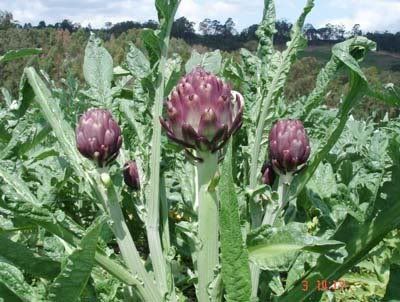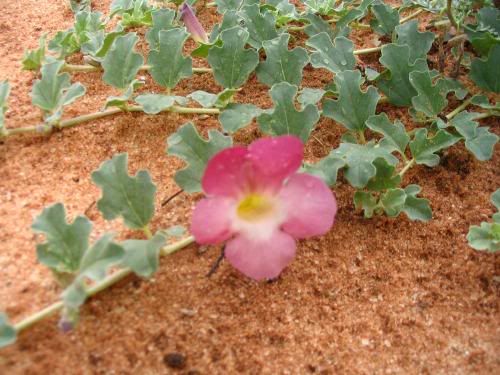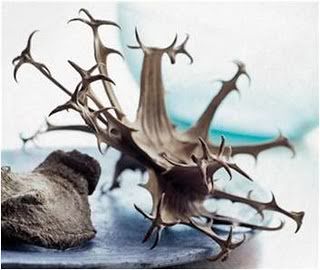http://npic.orst.edu/ingred/lowrisk.html
http://www.atsdr.cdc.gov/es/toxfaqs/es_toxfaqs_index.html
Friday, November 16, 2012
Thursday, November 15, 2012
Médico botánico criollo
http://books.google.com.bo/books?id=1aId3UxUYNUC&pg=PA386&lpg=PA386&dq=cumarouna+odorata&source=bl&ots=SrtD4eLdiP&sig=LKh_fCCcDaGh5uGAM-10-m5KuLw&hl=es&sa=X&ei=U9mdUMuDCILK9QSl5IGIBQ&ved=0CDgQ6AEwAw#v=onepage&q&f=false
Friday, November 9, 2012
Pau d'Arco
paudarco.org
Pau d'Arco bark has active principles, mainly lapachol, quercetin and other flavonoids. The dried inner bark of Pau d'Arco can be used as a tea which has a taste that is just a little bit harsh, and a color that may remind you of sepia-toned photographs. Some claim that it is useful in managing diabetes. It is also suggested that this plant is useful in treating other medical conditions, amongst which are fibromyalgia (FMS) and lupus (SLE). This herbal tea is used by many during the cold and flu season, and is a remedy for smoker's cough. Another medicinal use of Pau d'Arco is as an expectorant: to promote "coughing up" by the lungs in order to free mucus and contaminants that had been lodged there.
Pau d'Arco tea or tincture concoctions have reportedly had beneficial effects for cancer patients, anywhere from alleviation of chemotherapy symptoms to complete remission of tumors. According to Dr. Daniel Mowrey, who has become somewhat famous in the area of Pau d'Arco supporters, anti-cancer benefits can be had from Lapacho (the active compound), without any side effects being noticed (but see cautions page for potential side effects). Taheebo, another name that is used for this tea, is suggested to have been helpful to many.
Candida Albicans, a fungus which causes yeast infections, has also been treated by the Pau d'Arco herb. Aside from patients dealing with candida problems, those with other issues involving fungi or yeasts -- such as Aspergillus -- may also be helped due to the antifungal nature of lapachol. Moreover, it is claimed that certain bacteria are affected by this compound, so help may also be available for people with issues of that nature, including: C. diff, Staphylococcus aureus, Streptococcus, Helicobacter pylori (common cause of stomach ulcers), Brucella, tuberculosis, pneumonia, and dysentery.
This herb is claimed to be useful as an antioxidant. Moreover, Pau d'Arco is confirmed as being an antiparisitic against various parasites, including: malaria, schistosoma, and trypanosoma. Antiviral uses have been displayed by Pau d'Arco against several viruses, one of which is vesicular stomatitis virus, shortened as VSV. Additionally, the herb has even demonstrated usefulness in fighting inflammation.
Where does it grow?
When reading this site, you may want to purchase the herb in question, and perhaps even wish to grow it on your own. What we call Pau d'Arco is actually retrieved from the inner bark of the Tabebuia Avellanedae or Tabebuia Impetiginosa. If you're hailing from the United States, then growing it might not be an easy task, although in the southern area of Florida it might occur.
Continental South America is a major area for growth of Tabebuia. also ranges to the islands of Hispanola (the Dominican Republic and Haiti) and Cuba, as well as north into Mexico. Tabebuia is a neotropical genus with approximately 1000 species, hailing from the tribe Tecomeae of the family Bignoniaceae. In its background, Pau d'Arco has been used for centuries by the indigenous tribes of South America, as well as the ancientIncas and Aztecs.(WHAT?)
Pau d'Arco bark has active principles, mainly lapachol, quercetin and other flavonoids. The dried inner bark of Pau d'Arco can be used as a tea which has a taste that is just a little bit harsh, and a color that may remind you of sepia-toned photographs. Some claim that it is useful in managing diabetes. It is also suggested that this plant is useful in treating other medical conditions, amongst which are fibromyalgia (FMS) and lupus (SLE). This herbal tea is used by many during the cold and flu season, and is a remedy for smoker's cough. Another medicinal use of Pau d'Arco is as an expectorant: to promote "coughing up" by the lungs in order to free mucus and contaminants that had been lodged there.
Pau d'Arco tea or tincture concoctions have reportedly had beneficial effects for cancer patients, anywhere from alleviation of chemotherapy symptoms to complete remission of tumors. According to Dr. Daniel Mowrey, who has become somewhat famous in the area of Pau d'Arco supporters, anti-cancer benefits can be had from Lapacho (the active compound), without any side effects being noticed (but see cautions page for potential side effects). Taheebo, another name that is used for this tea, is suggested to have been helpful to many.
Candida Albicans, a fungus which causes yeast infections, has also been treated by the Pau d'Arco herb. Aside from patients dealing with candida problems, those with other issues involving fungi or yeasts -- such as Aspergillus -- may also be helped due to the antifungal nature of lapachol. Moreover, it is claimed that certain bacteria are affected by this compound, so help may also be available for people with issues of that nature, including: C. diff, Staphylococcus aureus, Streptococcus, Helicobacter pylori (common cause of stomach ulcers), Brucella, tuberculosis, pneumonia, and dysentery.
This herb is claimed to be useful as an antioxidant. Moreover, Pau d'Arco is confirmed as being an antiparisitic against various parasites, including: malaria, schistosoma, and trypanosoma. Antiviral uses have been displayed by Pau d'Arco against several viruses, one of which is vesicular stomatitis virus, shortened as VSV. Additionally, the herb has even demonstrated usefulness in fighting inflammation.
Where does it grow?
When reading this site, you may want to purchase the herb in question, and perhaps even wish to grow it on your own. What we call Pau d'Arco is actually retrieved from the inner bark of the Tabebuia Avellanedae or Tabebuia Impetiginosa. If you're hailing from the United States, then growing it might not be an easy task, although in the southern area of Florida it might occur.
Continental South America is a major area for growth of Tabebuia. also ranges to the islands of Hispanola (the Dominican Republic and Haiti) and Cuba, as well as north into Mexico. Tabebuia is a neotropical genus with approximately 1000 species, hailing from the tribe Tecomeae of the family Bignoniaceae. In its background, Pau d'Arco has been used for centuries by the indigenous tribes of South America, as well as the ancient
Tuesday, November 6, 2012
Plantas medicinales BR
http://www.arteblog.net/ervas-medicinais/plantas-medicinais-liberadas-pelo-ministerio-da-saude/
Plantas medicinais poderão ser receitadas pelo SUS para tratamento de algumas enfermidades, informou o Ministério da Saúde. Ao todo são 6 espécies de plantas considerados medicamentos fitoterápicos.
As plantas medicinais que foram estudadas e liberadas:







======================
http://www.arteblog.net/em/ervas-medicinais/
Plantas medicinais poderão ser receitadas pelo SUS para tratamento de algumas enfermidades, informou o Ministério da Saúde. Ao todo são 6 espécies de plantas considerados medicamentos fitoterápicos.
As plantas medicinais que foram estudadas e liberadas:

- Alcachofra – nome científico “Cynara scolymus L” – Usada no tratamento de dores abdominais relacionadas com o fígado e bile, combate a anemia e eczemas.Para fazer o chá: Coloque 3 colheres (chá) de folhas picadas e tres copos de água, deixe ferver por uns 4 minutos, desligue o fogo e deixe esfriar sem destampar. Coe e tome 1 copo 3 vezes ao dia antes das refeições. O consumo pode ser em forma de salada.

- Aroeira – nome científico “Schinus terebinthifolius” – Usada no tratamento de problemas ginecológicos usado como anti-inflamatório. Tire a casca, lave em água corrente, depois coloque uns 3 pedaços em um litro de água e ferva por 10 minutos, tome 1 copo 3 vezes ao dia. É indicado também para lavar partes do corpo afetado com feridas, reumatismo e úlceras.

- Cáscara sagrada – nome científico “Rhamnus purshiana D.C.” : Problemas intestinais e um laxante leve – fazer um chá usando 3 cascas em um litro de água fervendo por 5 minutos, espera esfriar, coa e conserva na geladeira. Tomar 2 xícaras ao dia.

Planta e semente da planta garra do diabo

- Garra do diabo – nome científico “Harpagophytum procumbens” - antiinflamatório e doenças reumáticas. Ferver 1 litro de água e adicionar 2 colheres (chá) da garra do diabo picado, espere esfriar, coe e beba 2 xícaras por dia antes da refeições.

- Isoflavona da soja: Tratamentos de sintomas da menopausa, reposição hormonal, prevenção da próstata e muitos outros benefícios para a saúde. A isoflavona é um composto da soja que o organismo retira quando consumimos, pode ser em forma de extrato, leite, queijo tofu ou misturando a farinha em vários alimentos, como bolos, saladas, vitaminas e outros. Quantidade diária suficiente: de 30 a 50 gramas.

- Unha de gato: Anti-inflamatório no combate da artrose, artrite reumatóide e osteoartrite, amigdalite, antiabortivo, reumatismo, sinusite, rinite e abscessos cutâneos. Mode de fazer o chá: Pega aproximadamente uma colher (sopa) de unha de gato e coloca em um litro de água. Leva ao fogo e deixa ferver por uns 5 minutos. Retire e deixe esfriar com a panela tampada e depois coe. Tome 2 xícaras ao dia.
======================
http://www.arteblog.net/em/ervas-medicinais/
Subscribe to:
Posts (Atom)